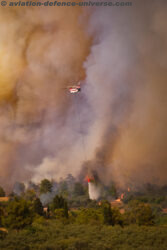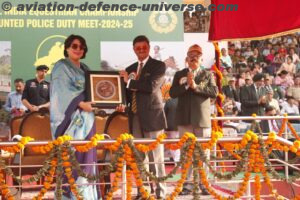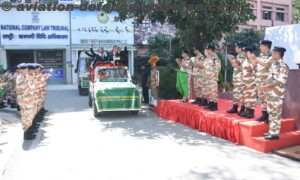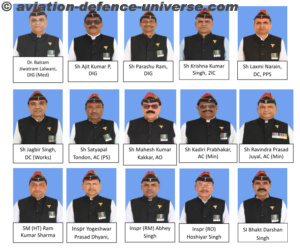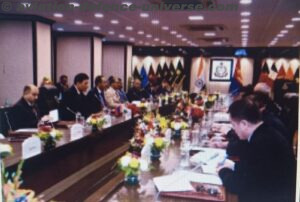An event that changed the course of Indian history
By Sangeeta Saxena
New Delhi. Very few Indians know that it was the Police personnel who were responsible for manning the 2,500 mile long border of India with Tibet until the autumn of 1959. On October of that year, at a height of 15,300 feet above sea level, in temperatures much below zero at Hot Springs in Ladakh,10 policemen were killed in an unequal combat with heavily armed Chinese troops.
In early September a patrol party of Indian soldiers was captured east of Chushul by the Chinese and released in the beginning of October. It was a time when the nearest Army Garrison was at Leh. The only units available for the Indian Government to use to project force quickly were the IBTF(Indian Border Task Force) and the CRPF(Central Reserve Police Force) units in the area. As a repercussion the two forces, got orders from the Deputy Director of the Ministry of Home Affairs on 22″ September to establish new posts right at the Chinese occupation line in Ladakh. For all intents and purposes the jurisdiction of the operation was given to the IBTF units under DSP Karam Singh and a force of forty CRPF personnel deputed to the IBTF under DSP S.P. Tyagi. The first outpost was supposed to be at a place called Hot Springs.
 On October 20, 1959, three reconnaissance parties were launched from Hot Springs in North Eastern Ladakh in preparation for further movement of an Indian expedition which was on its way to Lanak La. While members of two parties returned to Hot Springs by the afternoon of that day, the third one comprising of two Police Constables and a Porter did not return. Karam Singh sent out a larger team of ten policemen to go out and look for the three lost men who returned at 2300 hours that same night without success. But interestingly they had discovered hoof -prints on the ground which was proof of Chinese soldiers in the area.
On October 20, 1959, three reconnaissance parties were launched from Hot Springs in North Eastern Ladakh in preparation for further movement of an Indian expedition which was on its way to Lanak La. While members of two parties returned to Hot Springs by the afternoon of that day, the third one comprising of two Police Constables and a Porter did not return. Karam Singh sent out a larger team of ten policemen to go out and look for the three lost men who returned at 2300 hours that same night without success. But interestingly they had discovered hoof -prints on the ground which was proof of Chinese soldiers in the area.
At 0700 hours the next morning, on the fateful day of October 21, 1959, Karam Singh and Tyagi led a team of around twenty policemen armed with bolt action rifles in search of the missing policemen on ponies. The rest of the force was ordered to follow behind on foot. They reached the point of the hoof –prints, dismounted and awaited the arrival of the main force. On the arrival of the main party it was decided that Tyagi would stay behind and command this larger force while Karam Singh and his small group of twenty would follow the tracks and see if they led to the Chinese intruders in that sector. Because of the hill feature along the bank of the Chang Chenmo River where the hoof –prints continued, the two parties lost contact. At about midday, Chinese Army personnel who had the advantage of height by camping on a hillock, opened fire and threw grenades at Karam Singh’s party.
In the massacre ten CRPF men laid their lives and nine were wounded. The main force under Tyagi was forced to retreat and their attempts to recover the bodies of the dead CRPF men later in the night went in vain since many of the forty men under his command had also been wounded to some degree or another and the Chinese still dominated the hill above the riverbank which they continued to hold even on the 22ndOctober when Tyagi was finally ordered to retrieve his remaining force back to Tsogstsalu. Four of the more seriously injured policemen under Tyagi were airlifted to Srinagar on November first to be placed in a Military Hospital there.
For Karam Singh and the other prisoners the tragedy had just begun. Five of them were made to carry the dead body of the Chinese soldier who had been killed. They were all put together in a pit six feet deep, seven feet wide and fifteen feet long, normally used for storing vegetables. It was covered with a tarpaulin which left several openings through which the ice-cold breezes penetrated. We had to spend the night on the frozen ground without any covering. No water for drinking was provided nor were they permitted to ease themselves during the night and the following day. For the first three or four days they were given only dry bread to eat. Frostbite had started to set in due to the extrme cold.
 On the 24th Karam Singh was shown the corpses of the Indian policemen killed during the gunfire and asked to identify them. Then for the next twelve days he was tortured along with the others to make him admit that the Indians had opened fire and precipitated the skirmish, which he didn’t. The interrogation continued on the 27th and 28th .
On the 24th Karam Singh was shown the corpses of the Indian policemen killed during the gunfire and asked to identify them. Then for the next twelve days he was tortured along with the others to make him admit that the Indians had opened fire and precipitated the skirmish, which he didn’t. The interrogation continued on the 27th and 28th .
On 29th along with Karam Singh and his fellow prisoners, Chinese also returned the three Indian policemen for whom Karam Singh’s search party had started the hunt. The body of Constable Makhan Lal was never returned and remained unacknowledged by the Chinese. The last time he was seen was where the Chinese had forced Karam Singh and his men to leave his wounded body on the bank of the Chang Chenmo River under the protection of Chinese soldiers. He was most likely neglected and died of his wounds but there are no confirmations of this ruthless act on the part of the Chinese.
The bodies of the ten brave CRPF men were returned by the Chinese at the Sino-Indian border on November 13, 1959. At 8:00 AM on November 14, 1959, the bodies of the CRPF men were cremated with full police honors at Hot Springs. Karam Singh received a national hero’s welcome. He was awarded the President’s Police Medal by Prime Minister Nehru himself. The day of this gallant sacrifice is now commemorated as Martyrs Day by the Police all over India. Every year on this day, representatives of all the Police Forces in India gather at the Martyrs Memorial at Hot Springs to pay tribute to the Martyrdom of these brave hearts.
New Delhi got the news of the surrender of Karam Singh and his group of survivors under devastating Chinese fire on October 22, a day after the tragedy. On October 23 the Ministry of External Affairs submitted a note of protest to the Chinese Ambassador in Delhi. However, on the inside, Prime Minister Nehru and the Army Commanders had immediately come to realize that the region could not be left to the IB and police alone and army definitely needed to step in. Two days later from October 25 the Indian outposts in the region began receiving reinforcements and medical.
On October 27 the Chinese Foreign Ministry informed India and the world that it was prepared to release the captured Indian policemen “at any time”. On November 15, 1959, the Indian Army took over direct command of the frontier with China. It was one of the most crucial events leading up to the 1962 war.






































